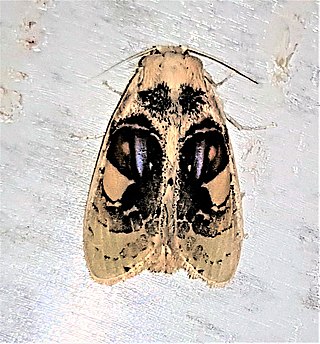
A Latin Dictionary is a popular English-language lexicographical work of the Latin language, published by Harper and Brothers of New York in 1879 and printed simultaneously in the United Kingdom by Oxford University Press.

The ilium is the uppermost and largest region of the coxal bone, and appears in most vertebrates including mammals and birds, but not bony fish. All reptiles have an ilium except snakes, although some snake species have a tiny bone which is considered to be an ilium.

Ars longa, vita brevis is a Latin translation of an aphorism coming originally from Greek, roughly meaning, "skilfulness takes time and life is short".
Brevis is the Latin word for short, and may refer to:
Palaeophanes lativalva is a species of moth in the family Arrhenophanidae. It is only known from the type locality, which is situated in a wet forested area in the central mountain range of Taiwan, at an elevation of about 1,400 m.
Cnissostages oleagina is a species of moth in the family Arrhenophanidae family. It has a wide range in the Neotropical Region from Sinaloa, Mexico to southern Brazil and Paraguay.
Dysoptus pseudargus is a species of moth in the family Arrhenophanidae. It is known only from the lowland Amazonian Region of southern Peru.
Dysoptus prolatus is a species of moth in the family Arrhenophanidae. It is known only from the type locality and mostly from primary forests of La Selva, Costa Rica.
Dysoptus sparsimaculatus is a species of moth in the family Arrhenophanidae. It is known only from three montane sites in northern Venezuela.
Dysoptus denticulatus is a species of moth in the family Arrhenophanidae. It is known only from Brazil, São Paulo, Boracéia Field Station, and Casa Grande.
Dysoptus anachoreta is a species of moth in the family Arrhenophanidae. It is known only from the type locality, Sierra del Libano, a dense subtropical forest and a spur of the Cuchilla San Lorenzo on the south-western Sierra Nevada de Santa Marta in Magdalena Province of Colombia.
Dysoptus tantalota is a species of moth in the family Arrhenophanidae. It probably occurs widely through the lowland Amazon rainforest. Currently it is known only from Guyana and southern Venezuela.
Dysoptus bilobus is a species of moth in the family name Arrhenophanidae. It is known only from the type locality, a lowland, tropical rainforest habitat in Costa Rica.
Dysoptus pentalobus is a species of moth in the family Arrhenophanidae. It is known only from the type locality in the Atlantic coastal forests of south-eastern Brazil.
Dysoptus avittus is a species of moth in the family Arrhenophanidae. It is known only from the type locality in southern Brazil.
Dysoptus acuminatus is a species of moth in the family Arrhenophanidae. It is known only from the type locality in southern Venezuela, but it almost certainly will be found elsewhere in the lowland Amazon rainforest.

Arrhenophanes perspicilla is a species of moth in the family Arrhenophanidae. It occurs throughout much of the lowland Neotropical Region from the state of Veracruz in Mexico to Misiones in Argentina and Rio Grande do Sul in southern Brazil. It is absent from the West Indies.
Arrhenophanes volcanica is a species of moth in the family Arrhenophanidae. It is found in much of the lowland Neotropical Region, from the Mexican state of Veracruz to Rio Grande do Sul in southern Brazil. It is absent from the West Indies.
Pseudopostega brevivalva is a moth of the family Opostegidae. It was described by Donald R. Davis and Jonas R. Stonis, 2007. It is known from Costa Rica.

Calothamnus brevifolius is a plant in the myrtle family, Myrtaceae and is endemic to the south-west of Western Australia. It is a small, highly branched shrub with almost cylindrical, pointed leaves and red flowers in summer. In 2014 Craven, Edwards and Cowley proposed that the species be renamed Melaleuca hawkeswoodii.




